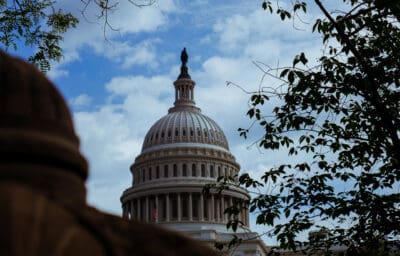
Bipartisan Progress Is Possible: Advice for Congress in 2023
January 4, 2023
At a Glance
Current economic conditions underscore the need to invest in education and workforce training. As a new year begins, leaders in our nation’s capital must remember that the well-being of our people and the long-term economic competitiveness of our country depend on the strength of our education and workforce systems.
As a narrowly divided Congress gets to work, pundits and policymakers alike predict more gridlock and less legislative action in 2023. However, there were several cross-party accomplishments in the 117th Congress that offer grounds for optimism. In 2022, leaders on the Hill reached bipartisan consensus on the most significant infrastructure bill in decades, the Infrastructure Investment and Jobs Act. Lawmakers on both sides of the aisle also supported the Creating Helpful Incentives to Produce Semiconductors and Science (CHIPS) Act.
These bills, along with job-creation provisions in the Inflation Reduction Act, will create millions of new jobs. However, bipartisan collaboration will be essential to prepare U.S. students and workers for these new opportunities—and for the future of work in general. In a split government, lawmakers must find ways to compromise on policies that fund and transform our education and workforce systems so everyone can benefit from new opportunities and the U.S. economy can thrive. At Jobs for the Future (JFF), our Policy team has identified several areas where Democrats and Republicans already align and can build on productive bipartisan accomplishments from 2022.
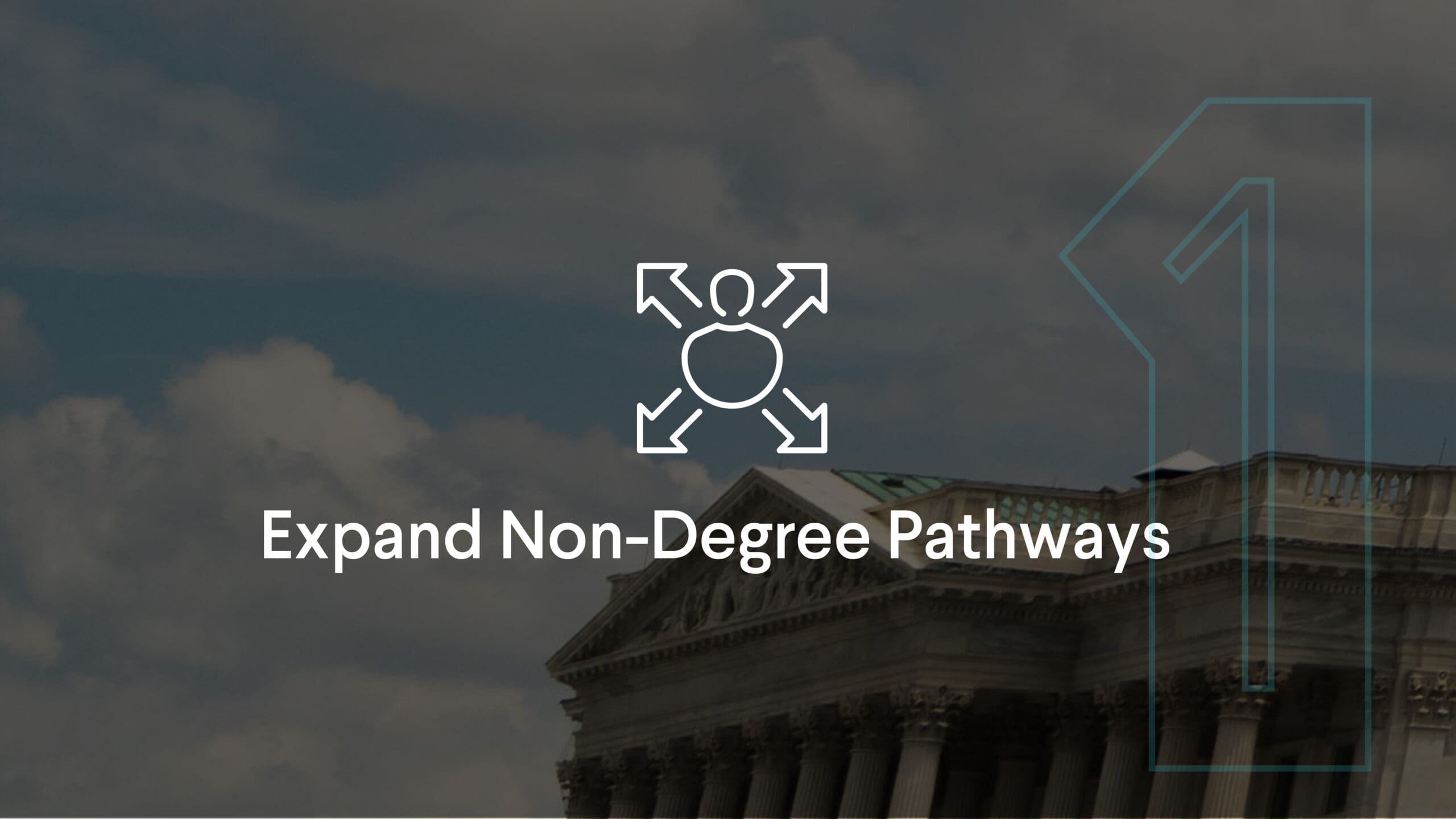
Expand Non-Degree Pathways
Today’s students, jobseekers, and workers need access to multiple high-quality pathways that lead to good jobs and careers so that they can make good decisions for their post-high school years and beyond. This fall, a survey of influential DC insiders by JFF and American Student Assistance revealed strong bipartisan support for non-degree pathways: 89% of respondents said that they either “strongly agree” or “somewhat agree” that non-degree pathways provide relevant skills to meet employer needs, and 78% said they agree that funding should be increased for non-degree education pathways, which may include apprenticeships and short-term industry-aligned training programs. The new Congress can promote the expansion of non-degree pathways by taking the following steps:
- Expand Pell Grants to include high-quality short-term credentialing programs, as proposed in the bipartisan Jumpstart our Businesses by Supporting Students (JOBS) Act. This expansion would make it easier for students to afford and access flexible short-term postsecondary options. Congress also should increase funding for skills development through the Workforce Innovation and Opportunity Act (WIOA).
- Provide targeted assistance to community colleges through the Strengthening Community Colleges Training Grants program, and as proposed in the bipartisan Assisting Community Colleges in Education Skilled Students (ACCESS) to Careers Act. Through this approach, Congress would scale lessons learned through Trade Adjustment Assistance Community College and Career Training (TAACCCT) grant program and take steps to fund states and consortia of colleges to scale reforms that address the evolving demands of the labor market, and expand dual enrollment pathways, career pathways, sector strategies, accelerated learning strategies, noncredit to credit articulation; stackable credentials; work-based learning; and holistic supports.
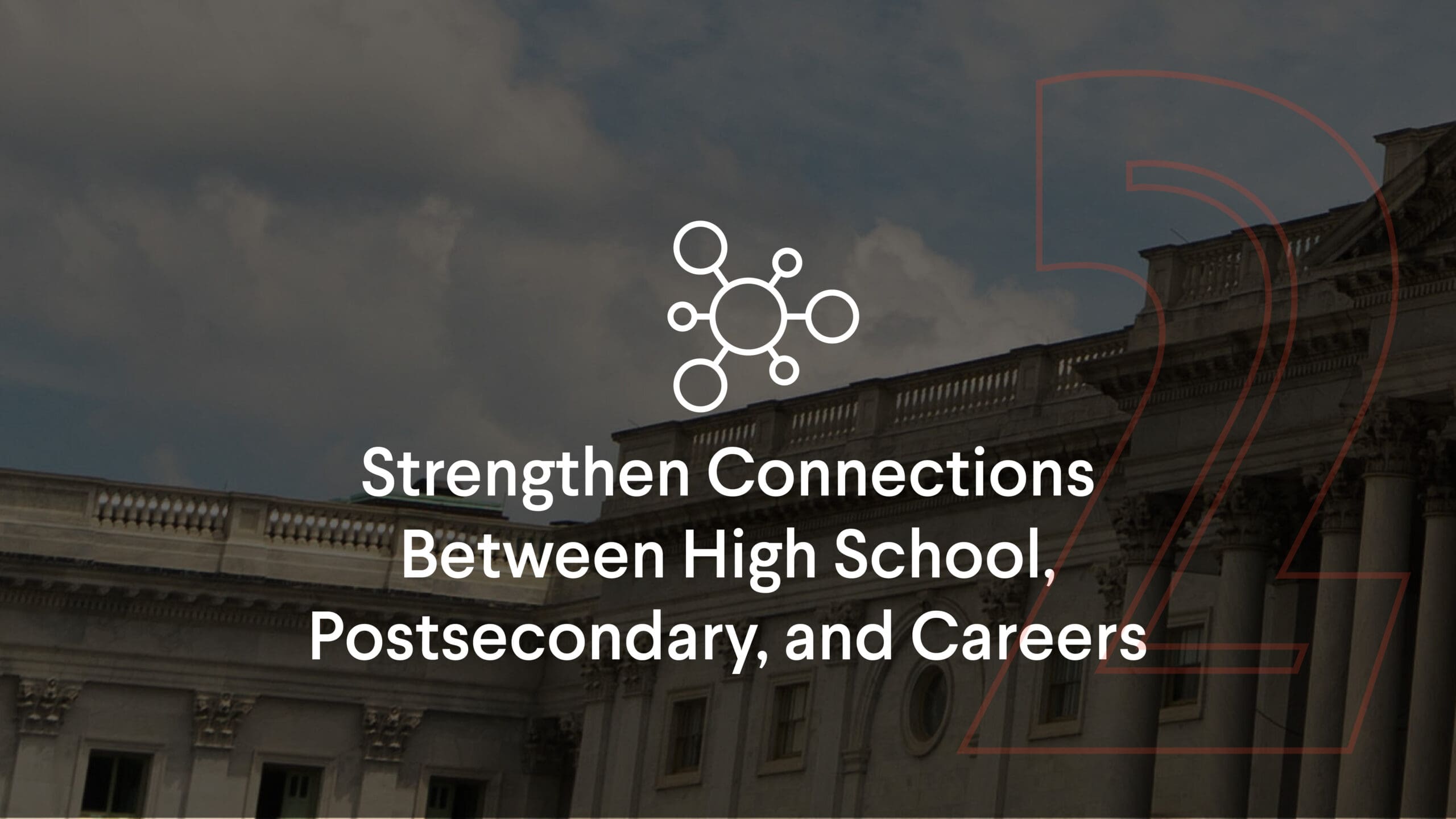
Strengthen Connections Between High School, Postsecondary Education, and Careers
In recent years, there has been bipartisan support in Congress for strengthening the connection between education and careers. Examples include the bipartisan reauthorization and expansion of the Strengthening Career and Technical Education for the 21st Century Act (Perkins V) and agreement on the value of youth apprenticeships, pre-apprenticeships, and early career exposure programs. However, any action to advance initiatives in these areas has taken place on a small scale and many learners continue to face significant gaps in access to these programs.
The members of the 118th Congress should create incentives that encourage states to increase equitable access to early postsecondary educational opportunities and early career exposure programs. They can do this by increasing federal support for both aligned pathways that start as late as 11th grade and college in high school experiences, such as dual enrollment, work-based learning opportunities, and structured supports. JFF’s Big Blur report offers a bold vision for this type of action, outlining innovative new approaches to connecting high school, postsecondary education, and workforce development experiences. To transform the connections across these systems, policymakers should consider introducing incentives for new financing and accountability models; alignment between K-12 systems, higher education, and workforce programs; unified governance for grades 11-14; and strengthening of staffing models and educator pipelines. By crafting innovative policies to advance these elements of JFF’s Big Blur vision, Congress can support the evolving needs of today’s learners and workers.
Current economic conditions underscore the need to invest in education and workforce training.
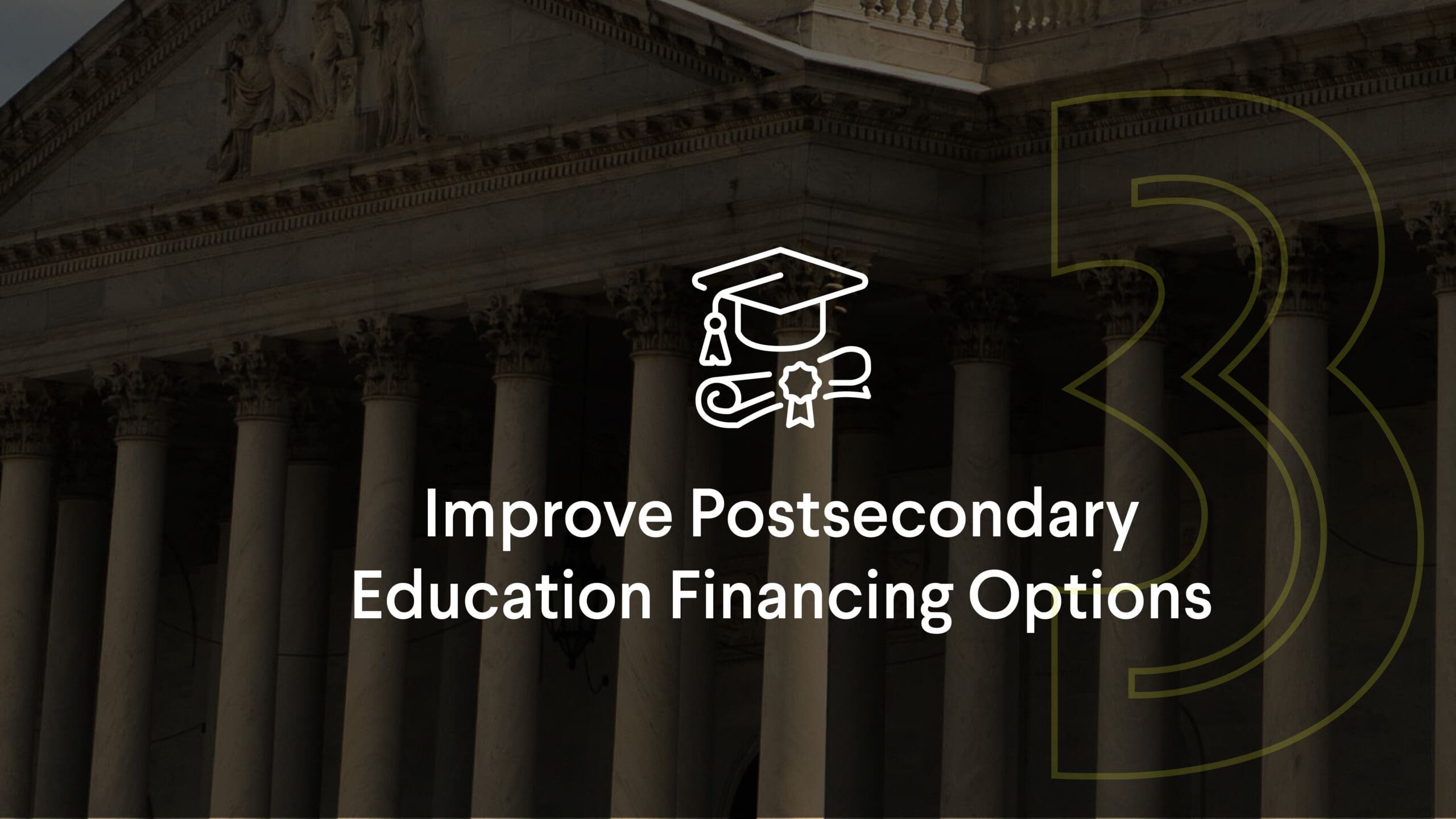
Improve Postsecondary Education Financing Options
Beneath President Joe Biden’s recent attempt to cancel student debt is a growing sentiment across both parties in Congress that the way we finance postsecondary education is broken. Student loans entail long repayment periods, monthly payments that may not be affordable, and debt balances that continue to grow if borrowers can’t keep up with their payments. Schools get paid regardless of whether their students graduate and succeed or not, and the federal government—whose loan balance accounts for nearly 93% of all student loan debt—does a poor job of ensuring that the educations it finances will pay off for students.
Income share agreements (ISA) and other innovative new education finance options offer new approaches that could ensure that students only pay for education if it pays off for them. ISAs feature an outcome-based repayment model, which means that schools don’t get paid if their graduates don’t succeed. That gives schools a financial incentive to improve the quality of their education programs, expand wraparound services, and strengthen pathways to employment.
But ISAs also entail unique risks for borrowers, and it’s not entirely clear how existing federal consumer lending laws apply to ISAs—despite recent developments that offer some insight into how regulators believe the Truth in Lending Act applies to ISAs. The bipartisan ISA Student Protection Act of 2022, introduced in the Senate last summer, would address many questions and concerns by establishing clear and thoughtful regulations to ensure that students who finance their educations with ISAs are protected. Moreover, by creating a consistent and transparent regulatory framework, the act would enable the ISA market to grow and mature, and give the ISA model an opportunity to realize its transformative potential.
Congress should give this important legislation due consideration in 2023.
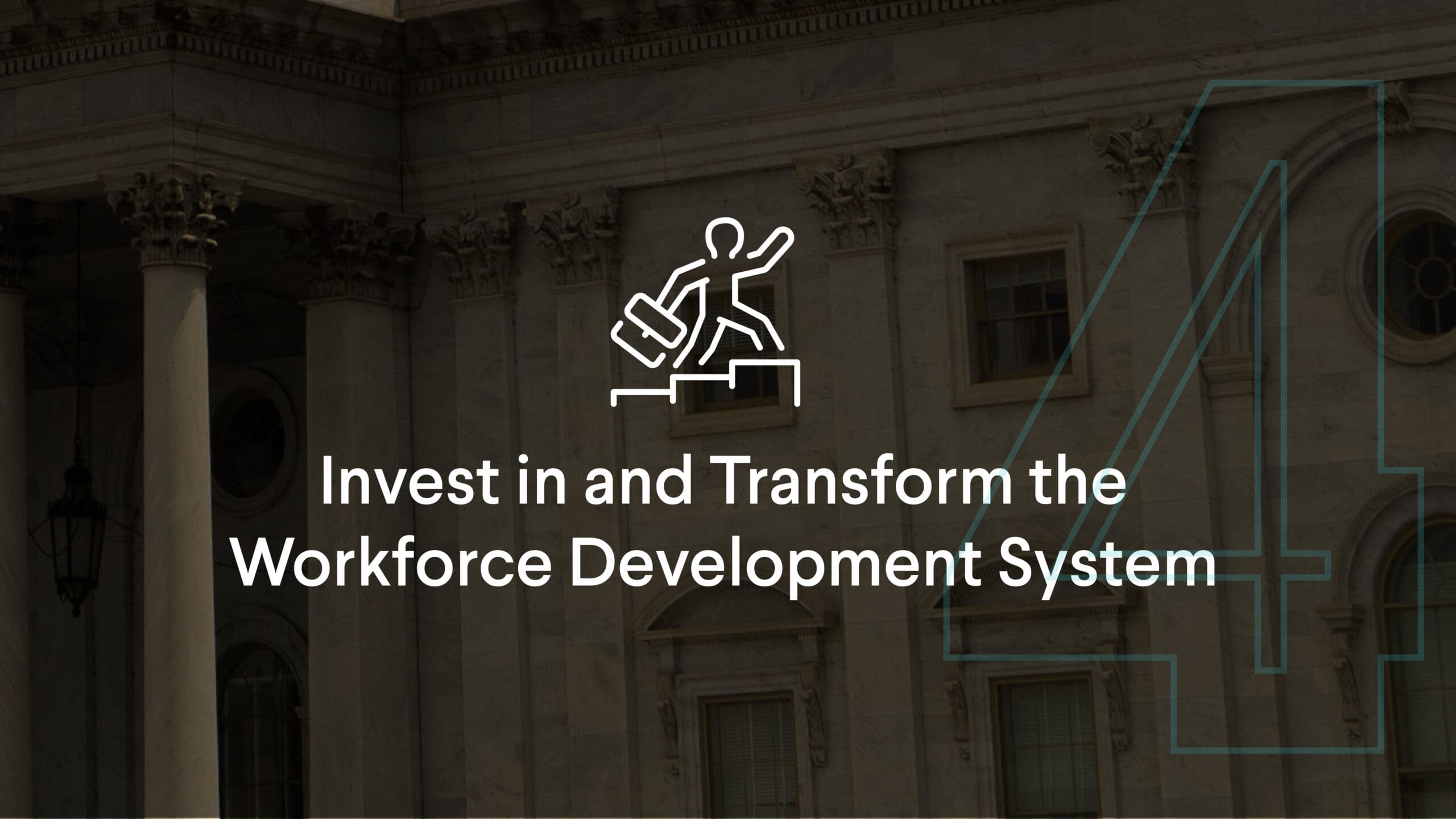
Invest in and Transform the Workforce Development System
The official U.S. unemployment rate fell to 3.7% in November 2022, but that number doesn’t tell the whole story. More than 6 million people are still out of work, with millions more in low-paying jobs with limited opportunities for advancement.
At the same time, U.S. employers are having difficulty hiring workers with the skills they need. This trend will continue because ongoing technological advancements will mean that the skills required for well-paid jobs will continually change and evolve, and the Infrastructure, CHIPS, and Inflation Reduction acts will create millions of new jobs that will require in-demand skills.
These trends could lead to numerous opportunities to pursue jobs that pay family-sustaining wages for people who have faced barriers to employment. But without significant and focused investments in workforce development, many people won’t be able to get the training they need to prepare for those jobs.
Congress should significantly increase investments in skills development programs. And at the same time, lawmakers should work to make changes in the nation’s workforce development system in order to transform the delivery of education and training, develop a robust career navigation system, and expand sector-focused career pathways. The strategies they adopt to achieve these goals should be designed to serve both employers and diverse populations of workers and learners, protect workers in times of transition, ensure the quality of education and training programs, and meet the needs of young people who are neither working nor enrolled in education or training programs.
As a new year begins, leaders in our nation’s capital must remember that the well-being of our people and the long-term economic competitiveness of our country depend on the strength of our education and workforce systems.
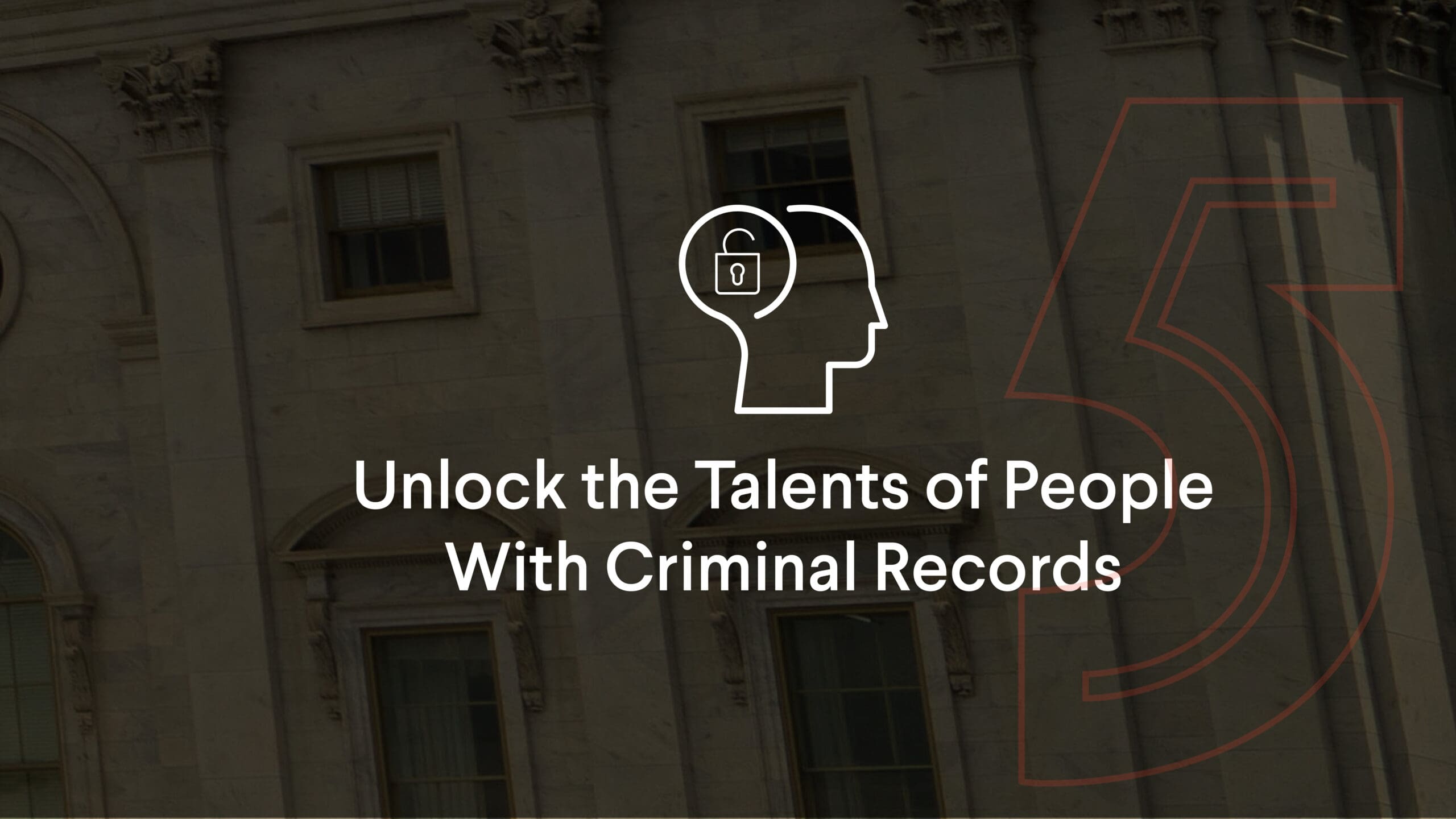
Unlock the Talents of People With Criminal Records
In today’s remarkably tight labor market, employers are struggling to fill job vacancies. Yet the policies and customs governing U.S. workplaces, institutions, and systems largely disqualify or discourage nearly one-third of this country’s adults from pursuing employment and training opportunities because they have a past conviction or a criminal record. Congress should work toward bipartisan agreement on policies that expand the skilled labor pool and giving people with records a fair chance in the job market. Lawmakers have already reinstated eligibility for federal financial aid for people who are incarcerated. But there’s much more to do.
For starters, Congress should make the bipartisan Reentry Employment Opportunities (REO) program a permanent part of WIOA. Established in 2014 as a demonstration project, the REO program has enabled the U.S. Department of Labor to test and evaluate a number of approaches and partnership models for improving entry and success in the labor market for both youth and adults who are reentering their communities following incarceration.
With growing body of evidence of what works for people in these circumstances, Congress should now codify REO and significantly increase federal funding for reentry services, especially in communities whose populations have been impacted by high levels of incarceration and for institutions with track records of serving people with criminal records. Grant dollars should be made available for efforts to expand access to training opportunities, wraparound supports, and work experiences that lead to quality jobs through transitional job programs, apprenticeships, career pathways programs, and other proven models.
Moreover, Congress should require REO grantees to meet WIOA performance measures; partner closely with the corrections, education, and workforce development systems; and adopt program designs that reflect the expertise of individuals who have been incarcerated or faced criminal charges. Federal programs should also provide dedicated resources for technical assistance and capacity building activities, such as meetings and events that give REO grantees opportunities to share best practices.
What to Expect in 2023
Current economic conditions underscore the need to invest in education and workforce training. As we begin a new year, leaders in our nation’s capital must remember that the well-being of all Americans and the long-term economic competitiveness of our country depend on the strength of our education and workforce systems.
JFF’s policy team congratulates the 117th Congress for its successes and hopes to see lawmakers in the 118th Congress increase their commitment to workers, learners, and employers.
Related Content

Year in Review 2022: Policy and Advocacy at JFF
December 20, 2022
The Big Blur: An Argument for Erasing the Boundaries Between High School, College, and Careers —and Creating One New System That Works for Everyone
This paper argues for a radical restructuring of education for grades 11 to 14—by erasing the arbitrary dividing line between high school and college—to open opportunities for the learners our current systems leave behind. We…

Scaling Dual Enrollment in Rural Communities
Dual enrollment is a powerful mechanism to support college readiness and success for high school students across the country. Rural schools provide unique advantages but face distinct challenges in creating effective dual enrollment opportunities for…

The Regulatory Treatment of ISAs Just Got a Lot Clearer
November 17, 2022
Modernizing Career Navigation in the United States
To help all students and jobseekers better navigate the rapidly changing job market and make informed choices about their educational and career paths, the United States must make systemic reforms and strategic investments in career…

Six Key Actions for Congress in 2022
January 5, 2022
5 Things Policymakers Need to Know About Today’s Students
September 14, 2022
How to Achieve an Equitable Economic Recovery for America: A Blueprint for the Biden Administration
With the country seeking a path to recovery from the COVID-19 pandemic and the economic crisis it caused, JFF calls on the Biden administration to work toward three goals: helping all people rebound and advance,…

JFF Calls on Congress to Act Quickly on the Build Back Better Framework
The bill, while a compromise, will provide critical investments in and support of American learners, workers, and families.

Policy & Advocacy
We are advancing evidence-based policy to enact changes in the education system and the workforce. Nearly half of U.S. workers are in low-paying jobs. Systemic issues in education, employment, and workforce development prevent millions of…